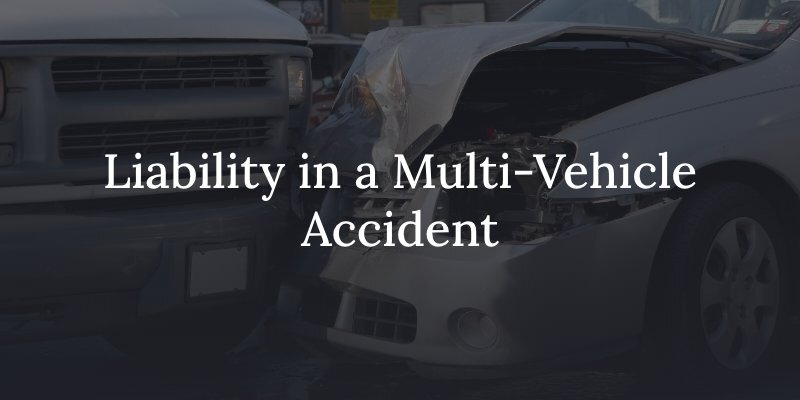Few accident scenes are as traumatic and chaotic as the aftermath of a multi-vehicle pileup, especially since there are often multiple serious injuries. Unfortunately, the confusion continues long after the accident when injury victims seek compensation for their damages like medical expenses, lost wages, and pain and suffering. In fault-based insurance states like Missouri, injury victims must prove another driver’s fault, to show that they are liable for damages—paid through their insurance coverage. In an accident with multiple vehicles and drivers, it takes an in-depth investigation to determine which driver is liable for the damages or if more than one driver contributed to the accident. If multiple drivers contributed to the fault in an accident, recovering compensation requires determining the percentage of each driver’s fault.

Investigating Multi-Car Accidents to Determine Fault
A multi-car accident occurs when two or more vehicles “pile up” in a crash, typically because one vehicle crashes in a high-speed traffic lane and other drivers in the same lane do not have time to stop or evade the accident and crash into the wrecked car. Depending on the number of vehicles involved, the first car in the accident may sustain further damage as one vehicle after another crashes into it.
A multi-car accident requires an in-depth investigation. The police make a report at the scene, including their observations and the statements of eyewitnesses. An injury victim may hire an attorney to investigate on their behalf to seek a settlement through an insurance claim. The insurance companies of the involved drivers also assign their investigators to the case. An investigation typically includes:
- Examining the police report
- Viewing any photo or video evidence available
- Visiting the scene of the accident
- Talking to involved motorists
- Obtaining eyewitness testimony
- Hiring accident reconstruction specialists
An experienced injury attorney in St. Louis documents compelling evidence of the cause of the accident and the sequence of events that followed after the initial crash. In most cases, the driver of the first car in the accident is the at-fault party, but not always. For example, if they crashed due to a road hazard or a defective part in their vehicle. In addition, other drivers in multi-car accidents may share in the fault, leaving them partly liable for damages.
How Does Comparison Negligence Work in Multi-Vehicle Pileups?
Missouri’s car accident compensation system allows accident victims to recover damages minus their percentage of fault. The investigation into a multi-car accident results in the assignment of a percentage of fault for the damages to each involved driver. For example, the first driver to crash could be 80% at fault for an accident because they made an unsafe lane change and sideswiped a vehicle, sending both vehicles careening sideways before coming to a rest in the lane of traffic, where another vehicle strikes them. But what if the next vehicle in the collision was exceeding the posted speed limit by ten miles per hour? The investigators could assert that the speeding driver could have stopped in time to avoid the collision if they hadn’t been speeding. That driver could be 20 percent at fault in the accident but they could still recover 80% of their damages—or $80,000 of a $100,000 claim. The driver who is 80% at fault for the accident due to their unsafe lane change cannot recover compensation because they are more than 50% at fault. The driver of the vehicle hit during the unsafe lane change may have 0% of the fault and can recover full compensation for their damages.
An Attorney Can Defend Your Rights and Best Interests
After a multi-vehicle accident, it’s beneficial to have an experienced St. Louis auto accident lawyer fighting for your rights and protecting your interests by documenting evidence and presenting a compelling case against one or more insurance companies to seek compensation.

